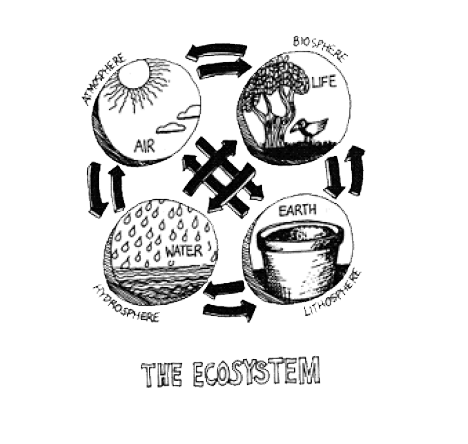Market

The very notion of “market” — be it in B2B and B2C — is at the heart of any marketing approach. According to the neoclassical theory, a market can be defined as the meeting of supply and demand. This translates into the determination of a transfer price, a price on which both parties agree for the transaction. Although the definition of this term applies to all areas, one can, of course, add a few nuances specifically to business.
Market Definition in B2B and B2C
The size of a market can be expressed in volume or value. The expression of a market in volume is the number of units sold, whereas the value of that market is expressed by the turnover or revenue.
Different Forms of Market Structure
The structure of a market can be of several types, depending on the level of competition in that market. A distinction can be made as follows:
- Pure and perfect competition: There are a large number of companies on both the supply and demand side and entry into this market is free (no barriers to entry). The products sold are homogeneous, i.e. the choice of buyers is guided only by price.
- Oligopoly: An oligopoly is a form of market in which a tiny number of firms have a monopoly of supply. In an oligopoly, the players involved are highly dependent on others to set. For example, the price of products sold or the volume of production.
- Monopoly: A monopoly is a market where a single supplier has the exclusive right to manufacture or sell a product or service offered to a multitude of buyers.
- Oligopsony: An oligopsony is the opposite definition of an oligopoly, i.e. a market where there are only a few demanders against a multitude of suppliers.
- Monopsony: A monopsony is the opposite of the definition of monopoly, i.e. a market where there is only one applicant against a multitude of suppliers
Limitations of Theoretical Approaches
The idea that the choices made by economic agents are rational is not always realistic. Marketers use the word market in two different senses:
In the narrow sense of the term, the market is how the sales of a service or product are structured. There are four main families of markets:
- Main market: All products which are technically alike to the product/service concerned and therefore frontally competitive;
- Surrounding market: All products which are technically different from the product/service concerned but which meet the same consumer needs;
- Generic market: All products of a different nature from the product/service concerned but that meet the same consumer needs;
- Support market: All products that are complementary to the product/service being studied and which are essential for its purchase.
The Typical B2B Ecosystem in a Market Economy
In the broader sense of the term, the market corresponds to all the players that can influence the sales of a service or product (systemic approach).

This is particularly true of business-to-business, where markets are often described as ‘ecosystems’. A term referring to a complex system in which many elements interact and self-influence in an interlocking way. In the manner described by Joël de Rosnay in his Macroscope opus (1975).
In the same way, it is possible to envisage that a business-to-business market is far from being limited to simple supply and demand, with recommendations being much more developed in B2B than B2C. To an extent, they even make up the essence of certain lines of businesses (e.g. architects who recommend materials to build contractors on behalf of their clients).

B2B Market Economy: Trends and Innovation
For companies whose business is directly linked to the Internet (such as digital advertising and e-commerce), many online tools are available to help them analyse their market. Thus, it is relatively easy and quick for them to identify search trends on search engines such as Google. To analyse search frequencies, to identify the most relevant geographical areas or to identify competitors positioned on the same keywords or expressions.
B2B Market Tools and Methodologies
A market can be analysed in two ways: from the demand side or the supply side.
Demand-side analysis
The demand for a product or service comes from different areas: consumers, recommendations, family and friends and consumer associations. Consumers or users are those who have the most influence on sales. Prescribers have the role of advice and recommendation. The buyer’s entourage and consumer associations also have an influence.
Potential demand is defined as the total consumption (quantities purchased) of a good/service.
Potential demand = Number of buyers × Average quantity purchased per buyer
A relative non-consumer is defined as a person who is not a consumer of the good/service but who could become one in the short or medium term. On the other hand, an absolute non-consumer is defined as a person who does not and will not purchase a good/service in the short to medium term.
Supply-Side Analysis
Supply is the result of the intervention of producers (production of a good or service) and distributors (who market that good or service). In addition to distributors, other intermediaries such as transporters and suppliers can also be mentioned.
Market share is defined as the percentage share of a producer in its market. Market share can be expressed in both volume and value terms.
Another indicator to be considered in the analysis from the supply perspective is availability (or distribution). Availability can be expressed in two different ways:
- Numerical availability: This corresponds to the division of the number of outlets of a given type (e.g. supermarkets) selling the products of a given producer out of the total number of outlets of the same type.
- Availability value: This corresponds to the division of sales in the product category produced by stores of a given type. Selling a brand into sales in the product category produced by all stores of the same type.
Pure demand known as “consumer demand” is defined as the ratio between the sales in value terms of a given producer. To the sales of all producers in the outlets where that product is marketed:
Pure demand = Market share value/Availability value
Useful links
- Market definition in Investopedia with a particular focus on securities
- The above example is often referred to as a pure market economy. A situation where supply and demand interrelate in a frictionless manner even though “pure” is an exaggeration in this context.
- Marketingturor goes further with a definition of the various types of markets (existing, available, etc.)




